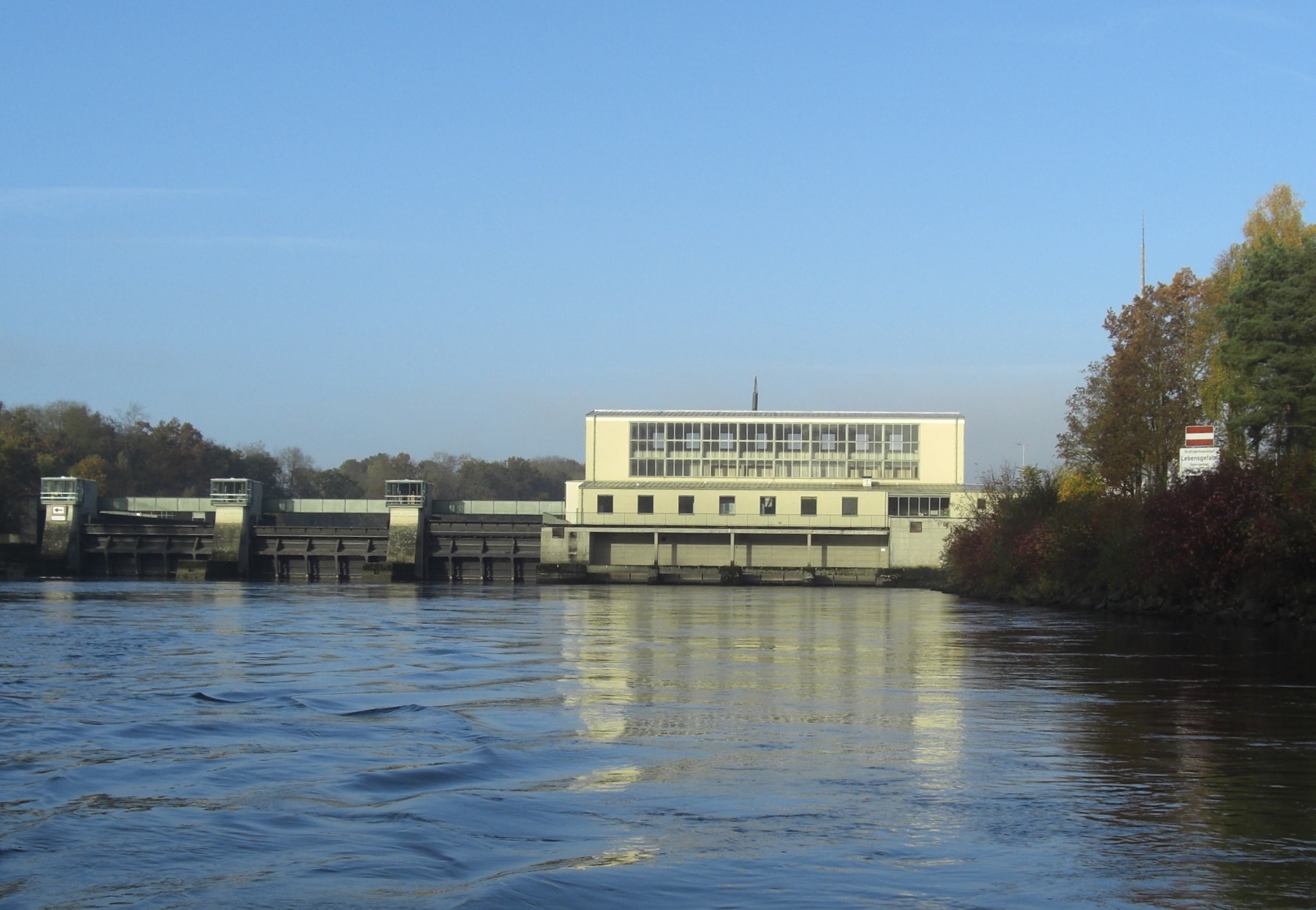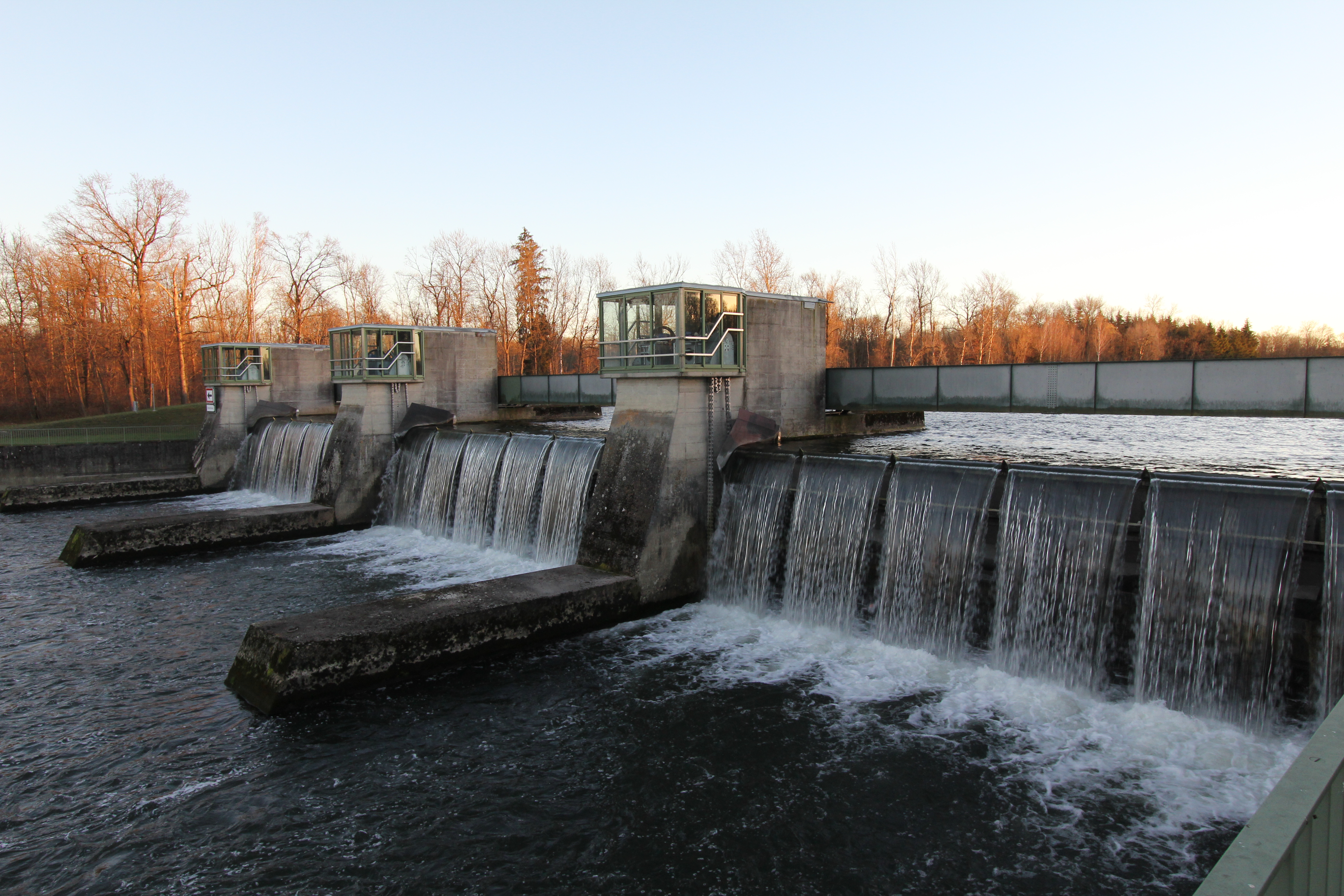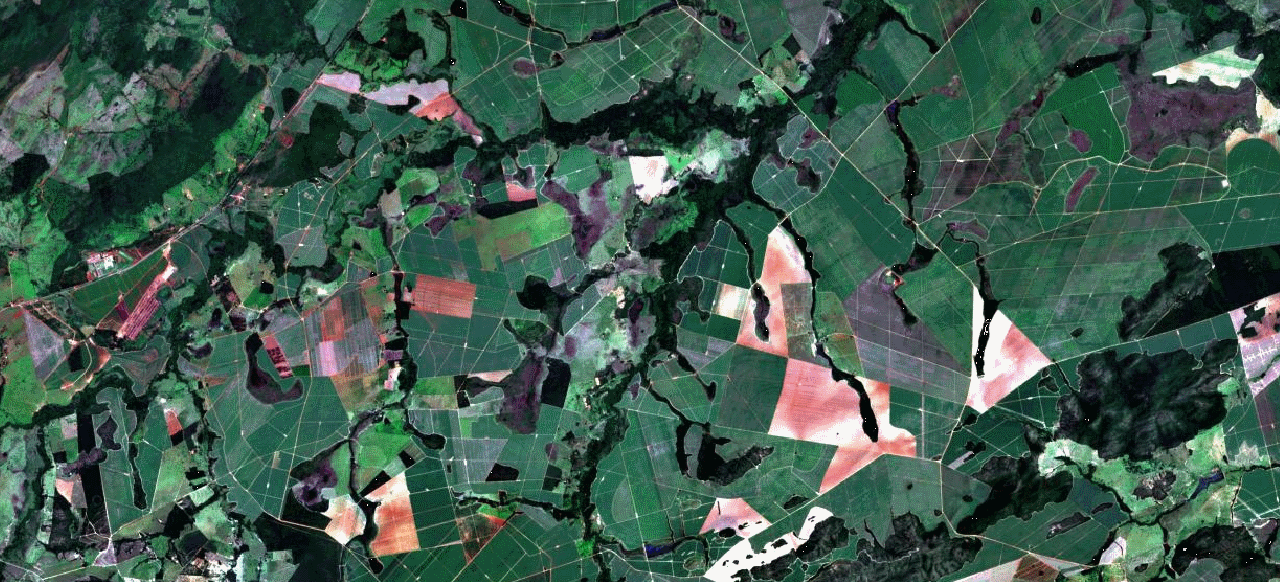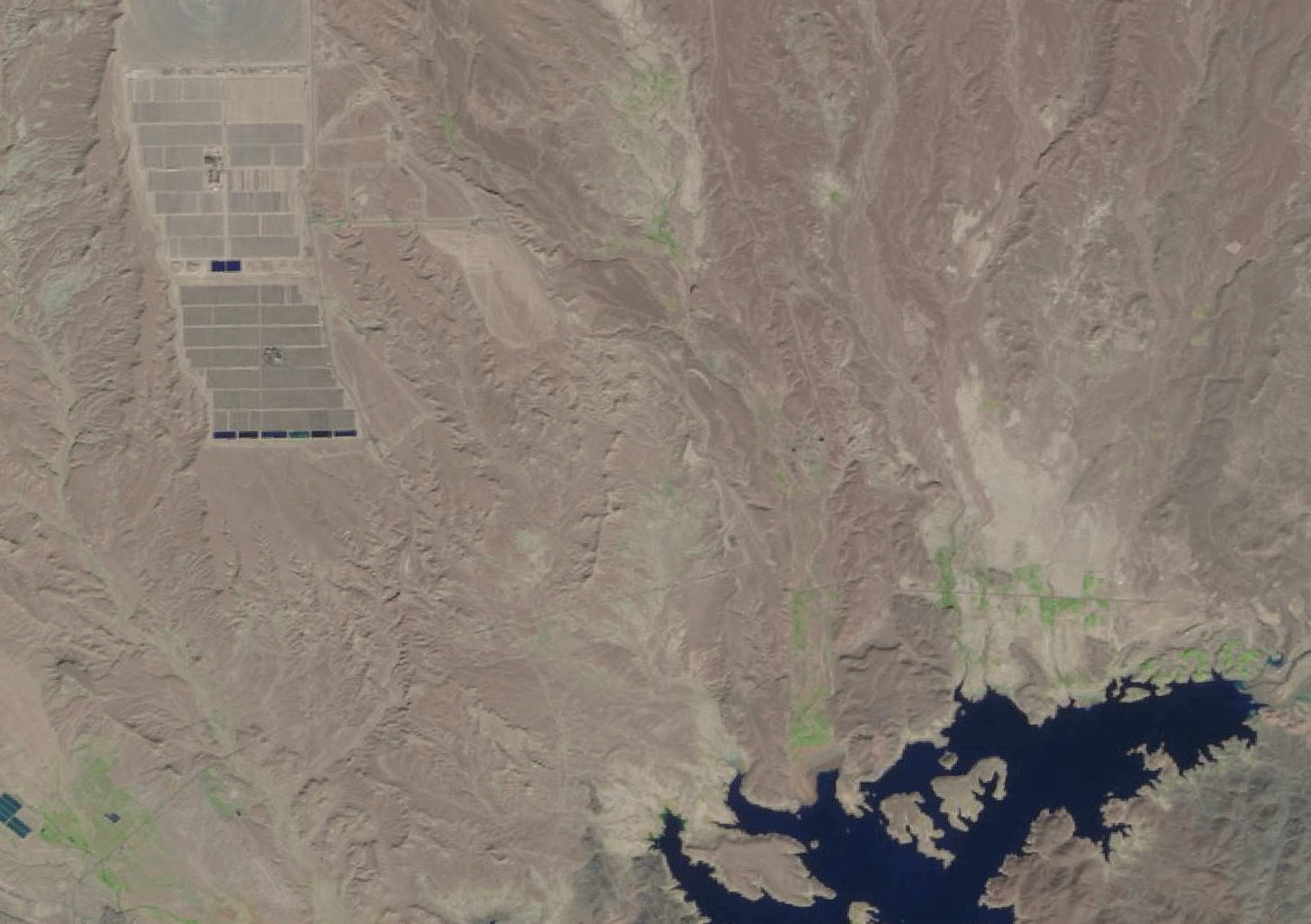Contact person: Prof. Dr. Stephan Theobald (WAWI)
Involved project partners: CESR, IGB, USF, UNU-EHS, WI, KIMA, WAGU, mundialis
In four regional case studies, the watersheds "Upper and Middle Weser river" and "Upper Danube river" in Germany as well as "Rio dos Patos" in Brazil and "Drâa-Valley" in Morocco, the direct as well as indirect, remote impacts of selected energy systems on the regional water situation will be demonstrated and evaluated.
Existing water footprint methods and methods for evaluating water withdrawal and consumption in terms of sustainability are compared systematically and extended considering water availability and quality. Determining aquatic ecological impacts and environmental impact studies complete the studies regarding water. On that basis an assessment scheme helps to identify possibilities to minimize aquatic ecological impacts. In close cooperation with regional practice partners concrete measures to reduce the water consumption for energy production are worked out. Possible synergies and trade-offs in the energy-water-nexus are analysed by the means of the concepts of ecosystem services and indicators.
Thermal (Coal-fired) Power Plants in the watershed "Upper and Middle Weser river" (Germany)
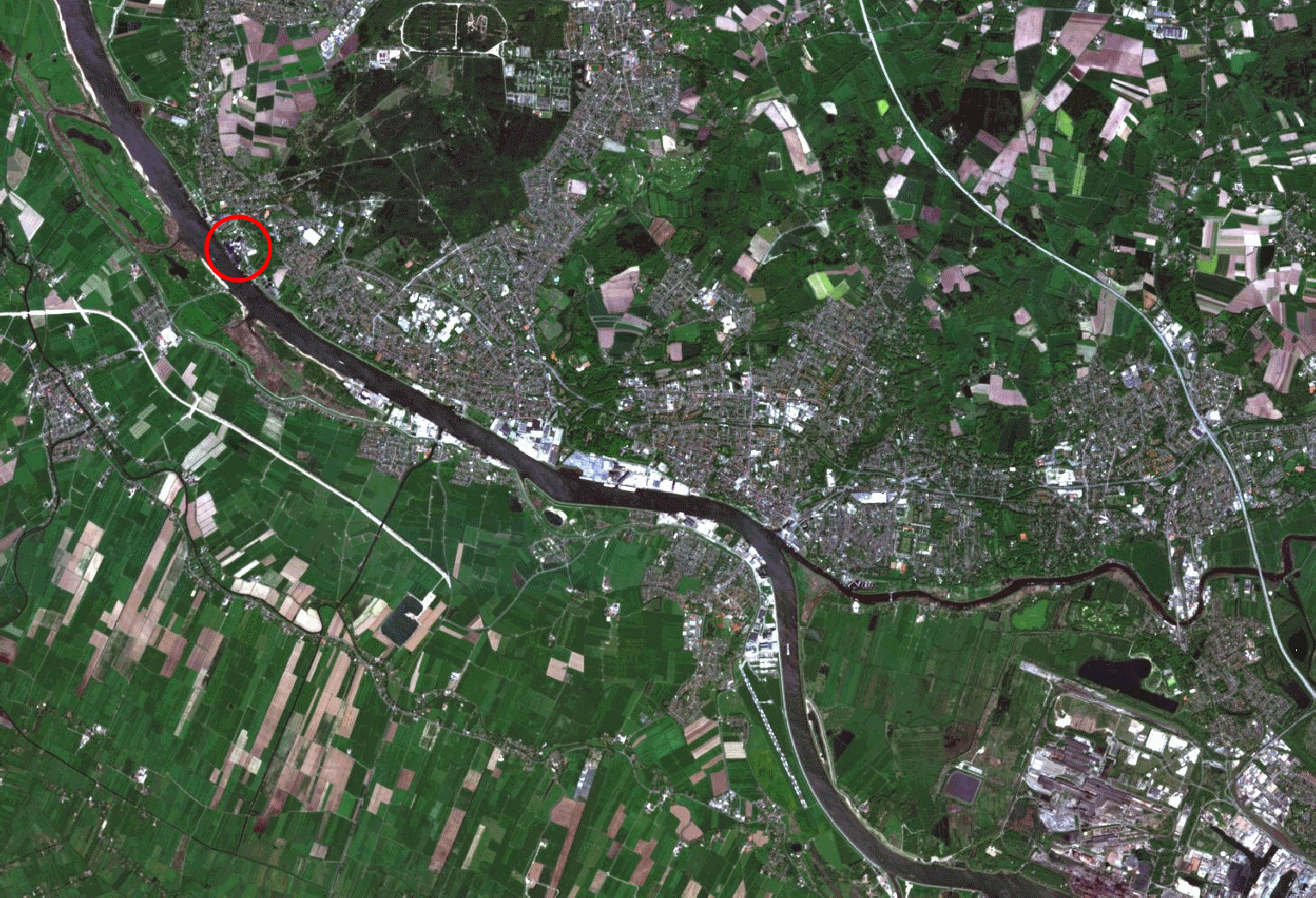
SENTINEL satellite image of "Ranzenbüttel" at the Weser river in the study site of case study "Upper and Middle Weser" (true color composite; accessible under maps.mundialis.de, search for "Ranzenbüttel"). The coal-fired power plant "Farge" is circeled in red.
Energy is produced in a conventional way here via coal-fired thermal power plants. On the basis of a water usage modell (cooling water) and a stream modell of Upper Weser river local and regional water usage and distribution along the Weser river are analyzed and the impacts on the water resources aboveground are identified considering user competitions and possible changes in water availability. Direct impats of thermal power plants with regard to water quantity, water quality and aquatic biodiversity as well as indirect impacts through the import of coal for example are determined and evaluated. Furthermore the impacts of the energy transition due to the loss of thermal power plants and compensation through different energy carriers are analyzed and assessed considering conflicting goals.
Hydropower in the watershed "Upper Danube river" (Germany)
A steering mechanism to optimize the energy production of weirs in cascade will be developed considering user competitions (e.g. flood management of polders). Optimisation routines (e.g. IPOPT) will be embedded in a simulation tool for hydraulic and energetic analysis of weirs in cascade and applied to the study site. In the next step energetic and hydraulic impacts of the normal operation mode and of the optimized operation mode are identified and the additional energetic potential of hydropower is detected. Evaluating environmental impacts of hydropower plants allows statements to be made on the field of tension energy and water ecosystem. In cooperation with the industry partner KIMA simulation and optimisation models are linked with automation technology and a training simulator for future users is developed.
Hydroelectric power station Günzburg at Danube river in the study site of the case study "Upper Danube river".
SENTINEL satellite image of the village Günzburg at the Danube river (village rightmost in the picture, below the red arrow) and surroundings in the study site of the case study "Upper Danube river" (true color composite, accessible under maps.mundialis.de, search for "Günzburg", choose the result "Günzburg, Bahnhofplatz, Denzingen"). The red arrows mark weirs, respectively.
Weirs of the plant Gundelfingen at Danube river at the study site of case study "Upper Danube River".
Biomass in the watershed "Rio dos Patos" (Brazil)
SENTINEL satellite image of Rio dos Patos in the study site of the case study "Rio dos Patos" in Brazil (true color composite; accessible under maps.mundialis.de, search for "Rio dos Patos", choose the result "Rio dos Patos, Vila Propício, Microrregião do Entorno de Brasília...").
The watershed was chosen together with the practice partner Embrapa to analyze water demand and in particular water pollution of energy generation from biomass. With the help of secondary data, water quality analysis as well as interviews with farmers and operators of sugar cane plants the water footprint of sugar cane production and its conversion into electricity is determined to register the impacts on water ressources and (aquatic) ecosystems within the watershed. The overall focus is the question, how agriculture affects water quality. The study will be supported by data surveys carried out at the beginning of the rainy season. Existing technical and regulatory options are described in a transparent way and further opportunities to reduce impacts will be developed together with local and global actors. To enable transferability of results, the local conditions of producing sugar cane and converting it into electricity, climate and water resources will be compared in a global context.
Solar thermal power in the watershed "Drâa-Valley" (Morocco)
As a first step, a bunch of water availability and water demand scenarios is developed for the region around Quarzazate considering climate change on the one hand and the planned expansion of solar thermal power in the context of a expectable strong socio-economic development on the other hand. Comparing suppy and demand scenarios helps to identify such that are critical with regard to water availability. They are as well the basis for developing both socio-economic and energy related savings measures to reduce water consumption (e.g. through more efficient irrigation techniques or replacement of wet cooling by hybride or dry cooling). Identified measures are evaluted by local decision makers on-site and solution approaches to enhance feasibility are developed.
SENTINEL satellite image of solar panel station Noor in the study site of the case study "Drâa-Valley" in Morocco (false color composite; accessible under maps.mundialis.de, search for "Barrage al mansour ad dahbi").

